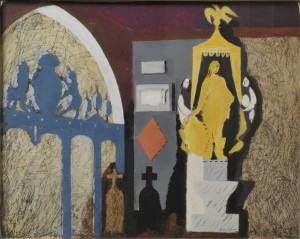Around Valentine's Day, we see advertisements for jewellery, with suggestions to buy the person you love a special piece of jewellery or even a diamond ring. This seemed a good time to take a look at the jewellery worn by some of the St.John ladies. Lydiard House is fortunate to have a collection of paintings of past ladies of the house, showing them in all their finery, especially their jewels. The portraits are our best evidence for the jewellery owned and worn by the St.John ladies and some of the men too.
This collection begins with a portrait of Lucy Hungerford, Lady St.John (d.1598) and ends with a photograph of Lady Mary (d.1940). The fashion for being portrayed in one’s jewels lasted across the centuries. Sadly none of the jewels worn by the ladies survived except for those belonging to Lady Mary who died at Lydiard in poverty. She had none of the fine jewels of her predecessors, just small items of costume jewellery, which may explain their survival.
Jewels were a statement of wealth and social status. They were rarely worn for sentiment alone, and those pieces which might have had a personal significance cannot be known from a portrait alone. But jewels were not just to be worn, they could be used to secure loans, sold to pay debts, given as gifts perhaps to secure a favour, or broken down to make a more fashionable piece.
From the later middle ages a greater choice of gemstones became available, and figurative jewellery depicting religious and classical figures was prized with cameos becoming increasingly popular, as we can see in Lady Lucy’s portrait. This was a time when portraits began to depict jewels with care, immortalising both sitter and their wealth, a permanent reminder of their status at a particular moment in time.
During the late seventeenth-century our ladies’ adornment is becoming much more restrained, perhaps an indicator that beliefs in the protective power of gems had passed, or simple changes in fashion where less was more. Either way it seems the pearl remained a constant favourite.
By the time we reach Lady Mary, we can see how far the St.John fortune had declined. Gone are the magnificent jewels and ropes of pearls, many of her items were paste and readily available to those with little money. For all that, these may have had more value to Lady Mary than any of the rubies or diamonds worn by her predecessors.













